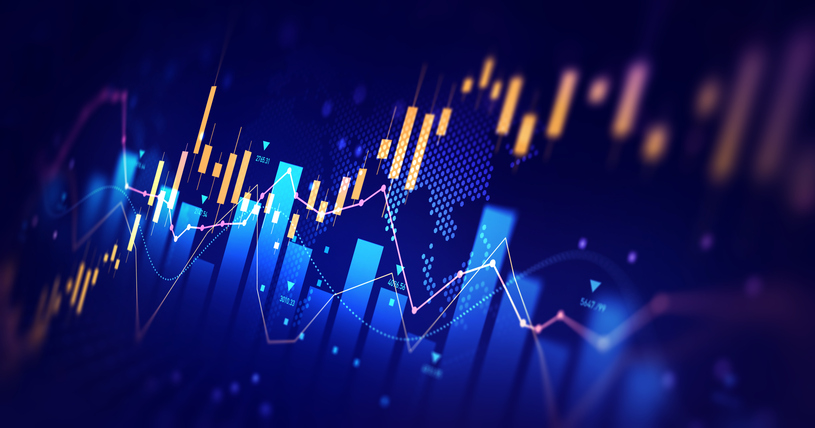6 Signs of a Bear Market Bottom
These indicators can help tell us whether stocks have further to fall or may be headed up.

Is the bear market over? Did we even experience a bear market? Are we in a new bull market? To say that answering these questions is tougher than usual is an understatement.
Consider the market’s recent moves. From April 29 through October 3, Standard & Poor’s 500-stock index lost 18.6% (the figure includes dividends). Over the next nine trading sessions, the market roared back to the tune of 9.4%. It then plunged 2.1% on October 17, before rebounding 1.8% the next day. Quick, get the Dramamine.
The matter of whether the unpleasantness that ended in early October was a true bear market depends on how you measure. The conventional definition of a bear market is a decline of 20%. By that measure, the S&P 500 barely avoided the bear’s lair if you look only at daily closing values. But if you look at intra-day prices, the S&P index did fall into bear territory on October 4, before reversing course and turning a loss of 1.8% into a gain of 2.3% in the final hour of trading.
From just $107.88 $24.99 for Kiplinger Personal Finance
Become a smarter, better informed investor. Subscribe from just $107.88 $24.99, plus get up to 4 Special Issues

Sign up for Kiplinger’s Free Newsletters
Profit and prosper with the best of expert advice on investing, taxes, retirement, personal finance and more - straight to your e-mail.
Profit and prosper with the best of expert advice - straight to your e-mail.
In any case, the question on everyone’s mind now is whether the worst is over or we’re in for more pain. Trying to call market tops and bottoms is risky business. Every bear market ends differently, and not every indicator works well every time. Here is a rundown of six signals of a market bottom, and what they’re telling us today. All of the figures we cite are available in daily newspapers and numerous Web sites, such as finance.yahoo.com and markets.usatoday.com. Returns are through October 20 unless otherwise noted.
Sentiment
Basically, when the man on the street is gripped with fear, it’s often a sign that the market has bottomed. High levels of bearishness are a sign that just about everyone who is inclined to sell has exited the market -- and it’s a classic indicator of a market bottom.
News headlines provide a clue sometimes. For example, on March 9, 2009 -- the day the calamitous 2007-09 bear market hit bottom -- the Wall Street Journal published a story that wondered “How low can stocks go?” It even made a case that the Dow Jones industrial average -- then trading at about 6,500, down 54% from its October 2007 peak -- could fall to 5,000. Instead, the index finished 2009 up 19%.
Where we are now: Are investors so bearish that share prices have nowhere to go but up? No, says Matt Freund, a portfolio manager with USAA. At bottoms, he says, “Nobody is thinking or talking about prices being reasonable,” as many people say today. Instead, what you hear is that things could get worse.
For a good read on market sentiment, check out the weekly AAII survey at www.aaii.com/sentimentsurvey. AAII, formerly known as the American Association of Individual Investors, asks its members whether they’re feeling bullish, bearish or neutral about the stock market over the next six months. For the week that ended October 13, the bulls outnumbered the bears 39.8% to 36.4%, with 23.9% neutral. AAII also reports the percentage change from the previous week: Bulls were up 12.9 percentage points from October 6; bears were down 20.5 points.
As for media coverage, consider the headline on the cover of the October 15 issue of the Economist: “Nowhere to Hide: Investing During a Time of Crisis.” Or these two headlines, both from the October 3 issues of the Wall Street Journal: “Spooked Investors Make a Run for Safety” and “Beware of Market Rallies.” These headlines may not be as gloomy as Business Week’s infamous “Death of Equities” cover in 1979, not long before the start of one of the greatest bull markets ever. But they do suggest growing pessimism, and that’s a plus for stock investors.
Corporate Earnings
Profits tend to be a lagging indicator, but you can use industry analysts’ earnings estimates as a measure of market sentiment. If their estimates for earnings growth seem too high, particularly in light of current economic conditions, it’s a bearish sign because it suggests that analysts will be trimming forecasts down the road.
Where we are now: Industry analysts estimate that the companies in Standard & Poor’s 500-stock index will generate earnings growth of 12.5% next year. Given the iffy health of the U.S. economy, Europe’s abundant problems and slowing growth in developing nations, analysts’ projections appear overly optimistic. By contrast, market strategists, who tend to be less ebullient than analysts, see earnings growing only 7.5% in 2012. If the gurus are right, analysts will be trimming estimates in coming months, and that does not bode well for share prices. At a market bottom, we see “less optimism,” says S&P Capital IQ strategist Alec Young.
Advancers Versus Decliners
S&P Capital IQ technical analyst Mark Arbeter likes to look at the ratio of stocks that are moving up on a given day compared with the number that have fallen on the same day. When 90% of the issues on the New York Stock Exchange decline three out of five days in a row, says Arbeter, “you know you’re seeing some capitulation” -- signs that the last batch of potential sellers is finally throwing in the towel.
A variation on the same theme: Jim Stack, of InvesTech Research, looks for a decline in the number of stocks hitting 12-month lows on the NYSE -- which signals that the market is on the way up, and the bottom has already happened.
Where we are now: Of the 3,107 stocks that traded on the NYSE on October 11 -- about a week after the market low -- 1,340, or 43%, declined that day. But on October 17, decliners led advancers, 2,472 (79%) to 575. The percentage of declining stocks hasn’t yet hit the 90% level that Arbeter usually considers an indication of a market bottom.
What about the number of stocks hitting a new 52-week low? It’s lower than it was around October 3, when the number of NYSE companies at new 52-week lows was 837. On October 17, just 16 stocks hit new lows -- indicating, by Stack’s theory, that stocks are heading up.
Moving Averages
Many market watchers look to how stocks are trading in relation to the moving-day average to find a dividing line between a bear and a bull market. The measure is the average of the daily closing prices of an index or a stock over a period of time (the average “moves” because as time progresses, you remove data for the oldest day and add figures for the latest day). If the S&P 500 is trading above its moving average, the thinking goes, it’s a bull market -- time to invest. If it moves below the average, you should cash out -- it’s a bear. You can examine moving averages over varying periods of time, depending on how long a trend you’re trying to capture.
Where we are now: In mid October, the S&P 500 and the Dow Jones industrial average were trading at their respective 65-day moving averages. The Wall Street Journal reports the 65-day moving average in its daily “Money & Investing” section. But both indexes were trading below their 200-day moving-averages, signifying that, despite the recent rally in stocks, the market is not out of the woods yet.
Trading Volume
At the end of a bear market, says S&P Capital IQ’s Young, daily trading volume -- the number of shares traded in a stock or an exchange -- spikes. “Extremes in the market are always marked by extremes in volume,” he says.
The average trading volume of the stocks in the S&P 500 index over the past five years has been 4 billion to 4.5 billion shares a day. During the last bear-market trough, in March 2009, volume was nearly double the five-year average daily volume and stayed high throughout the month, at an average of 7.4 billion shares per day.
S&P technical analyst Arbeter says that he’d look for the 200-day average trading volume of the NYSE, which sits at 1.1 billion shares per day, to increase by 50% -- to more than 1.65 billion shares -- for multiple days. “When people panic, they tend to throw everything out of their portfolio, and that creates a large spike in volume,” he says.
Where we are now: On October 17, volume on the NYSE sat at 905 million shares -- below the elevated levels Arbeter expects to see at a market bottom. As for the S&P 500, average volume for the past 200 days has been 4.1 billion shares. During the October 3 low, volume didn’t spike, but was 37% higher, at 5.7 billion shares.
Emerging Markets
Growth in emerging markets has fueled results for many U.S. companies. So it may come as no surprise that over the past five years, stock markets in emerging nations have led the U.S. market, says Arbeter. For instance, stock markets in Brazil, China and India peaked in November 2010, five months before the U.S market peaked. So Arbeter is keeping an eye out for a rebound in China and India, as well as in Brazil and the rest of Latin America.
Where we are now: The MSCI emerging-markets indexes are a sea of red on the basis of 12-month, year-to-date and three-month performance. But the Emerging Markets index rebounded in October -- up 3.1%, compared with 7.4% for the S&P 500.
And how is China -- the world’s growth engine -- doing? The MSCI China index has slipped 24.7% this year. Strategists are divided on whether the country will have a hard landing -- a steep slowdown in economic growth -- but the Chinese stock market has come back 12.2% since hitting a low on October 4. While it’s too soon to say whether this rally will persist, the recent action in developing markets bodes well for U.S. stocks.
Profit and prosper with the best of Kiplinger's advice on investing, taxes, retirement, personal finance and much more. Delivered daily. Enter your email in the box and click Sign Me Up.

Nellie joined Kiplinger in August 2011 after a seven-year stint in Hong Kong. There, she worked for the Wall Street Journal Asia, where as lifestyle editor, she launched and edited Scene Asia, an online guide to food, wine, entertainment and the arts in Asia. Prior to that, she was an editor at Weekend Journal, the Friday lifestyle section of the Wall Street Journal Asia. Kiplinger isn't Nellie's first foray into personal finance: She has also worked at SmartMoney (rising from fact-checker to senior writer), and she was a senior editor at Money.
-
 5 Types of Gifts the IRS Won’t Tax: Even If They’re Big
5 Types of Gifts the IRS Won’t Tax: Even If They’re BigGift Tax Several categories of gifts don’t count toward annual gift tax limits. Here's what you need to know.
-
 The 'Scrooge' Strategy: How to Turn Your Old Junk Into a Tax Deduction
The 'Scrooge' Strategy: How to Turn Your Old Junk Into a Tax DeductionTax Deductions We break down the IRS rules for non-cash charitable contributions. Plus, here's a handy checklist before you donate to charity this year.
-
 IRS Says You Made a Tax Return Mistake? A New Law Could Help You Fight Back
IRS Says You Made a Tax Return Mistake? A New Law Could Help You Fight BackTax Law Updated taxpayer protections change what the IRS must explain on error notices and how long you have to respond.
-
 Dow Rises 497 Points on December Rate Cut: Stock Market Today
Dow Rises 497 Points on December Rate Cut: Stock Market TodayThe basic questions for market participants and policymakers remain the same after a widely expected Fed rate cut.
-
 JPMorgan's Drop Drags on the Dow: Stock Market Today
JPMorgan's Drop Drags on the Dow: Stock Market TodaySmall-cap stocks outperformed Tuesday on expectations that the Fed will cut interest rates on Wednesday.
-
 Stocks Slip to Start Fed Week: Stock Market Today
Stocks Slip to Start Fed Week: Stock Market TodayWhile a rate cut is widely expected this week, uncertainty is building around the Fed's future plans for monetary policy.
-
 Stocks Keep Climbing as Fed Meeting Nears: Stock Market Today
Stocks Keep Climbing as Fed Meeting Nears: Stock Market TodayA stale inflation report and improving consumer sentiment did little to shift expectations for a rate cut next week.
-
 Small Caps Hit a New High on Rate-Cut Hope: Stock Market Today
Small Caps Hit a New High on Rate-Cut Hope: Stock Market TodayOdds for a December rate cut remain high after the latest batch of jobs data, which helped the Russell 2000 outperform today.
-
 UNH Sparks a 408-Point Surge for the Dow: Stock Market Today
UNH Sparks a 408-Point Surge for the Dow: Stock Market TodayThe best available data right now confirm both a slowing employment market and a December rate cut, a tension reflected at the equity index level.
-
 Stocks Bounce Back With Tech-Led Gains: Stock Market Today
Stocks Bounce Back With Tech-Led Gains: Stock Market TodayEarnings and guidance from tech stocks and an old-school industrial lifted all three main U.S. equity indexes back into positive territory.
-
 Dow Slides 427 Points to Open December: Stock Market Today
Dow Slides 427 Points to Open December: Stock Market TodayThe final month of 2025 begins on a negative note after stocks ended November with a startling rally.